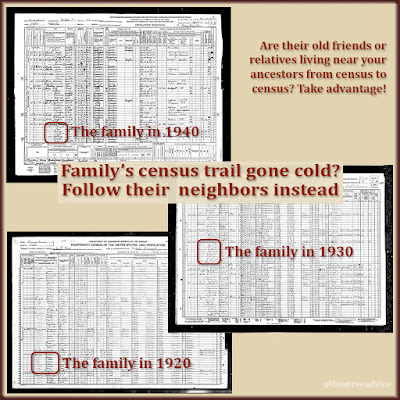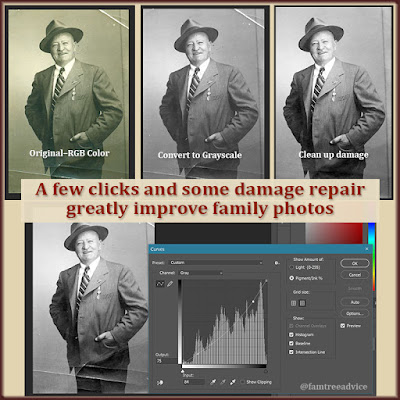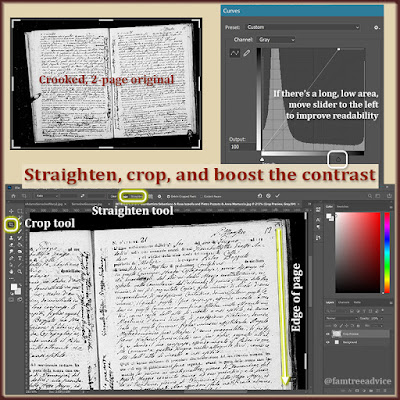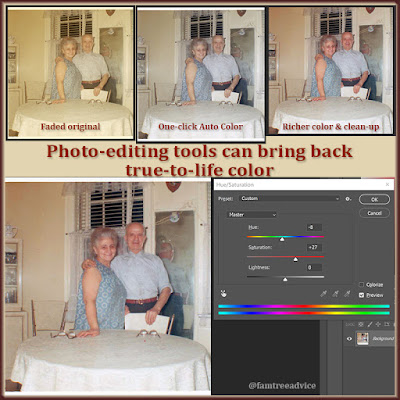I got an email from Geni.com where, unfortunately, I uploaded my family tree years ago. I say "unfortunately" because I didn't know people would try to correct me and want to "take over" people in my tree.
The email said it found duplicates and wanted me to merge some people. I checked them out, and each one was clearly the same person in different family trees. I approved them all. I really don't care.
What I do care about is MY tree. My living, constantly developing family tree I build in Family Tree Maker and synchronize to Ancestry.com. In my tree, I make no assumptions. I base every fact on available documents.
It was a coincidence to get the Geni email about mergers the same day I was considering a merger within my own tree.
Should These People Be Merged?
Recently I've been examining the earliest available vital records from my grandfather's hometown. I can fit nearly every person named in the early 1800s birth, marriage, and death records into my tree. It's kinda easy when all the families intermarry over and over again.
I'm examining the earliest vital records so I can identify more people in this amazing book I bought. The book contains a detailed description of each of the 560 households in Grandpa's town in the year 1742. (That's the year the town did a complete census for tax purposes.) I've tied into about a quarter of these families so far.
 |
| Imagine a set of marriage documents that tells you the names of the bride and groom's great grandparents! |
The town's marriage records get more valuable in the mid-1820s. That's when they include:
- the groom's birth or baptism record
- the bride's birth or baptism record
- the death record (if it applies) for the bride and groom's deceased parents
- the death record (if their father is dead) for the bride and groom's deceased grandfathers
The death records show why a parent or grandparent can't give consent for the marriage. They're dead.
Imagine finding the marriage of a couple born in 1800, and learning the names of their paternal great grandparents! It's a genealogist's gold mine.
In these records I found 2 brothers named Cocca who married 2 sisters named Cocca. I knew they fit into my family tree. So I started processing all the documents from their 1827 and 1830 marriages.
Because the brothers' and the sisters' fathers were dead, there were lots of records. I was able to connect both families to households found in the 1742 census.
That's when I had a decision to make. You see, the Cocca brothers' paternal grandmother was Colomba Lombardo. Her 1816 death record says her parents were Domenico Lombardo and Cristina Pilla. And that couple is in the 1742 census. Domenico was born in 1696; Cristina in 1704. Awesome!
 |
| Colomba fit into a family listed in the 1742 census. But hold on. There's already a Colomba there. |
As I added Colomba to this family, I noticed Domenico and Cristina already had a child named Colomba. Was she the same person? Should I merge them?
Let's look at the facts:
- In the 1742 census, there is a 1-year-old girl named Colomba Lombardo. That tells me she was born in 1741.
- In the 1816 death records, there is a 68-year-old Colomba Lombardo from the same family. According to this death record, she was born in 1748.
Now, we all know death records can be inaccurate. And I know that at this time in history, my townspeople weren't 100% sure of their age. They didn't have to put their exact birth date on forms all the time like we do.
So maybe the Colomba who died in 1816 wasn't 68 years old. Maybe she was 75 years old and is the same baby from the 1742 census. If she were born in 1741, she'd be 8 years older than her husband. That's a little unusual in this town, but not out of the question.
Then again, there's always the possibility that baby Colomba found in the 1742 census died as a child. It would be customary for the couple to give their next baby girl the same name.
Because I know this custom, I cannot assume that the Colomba who died in 1816 is the Colomba who was born in 1741. For now, I will leave them both in my tree as sisters.
How can I ever prove they were sisters and not the same person? The answer may be waiting in more of the town's marriage records. So far, I've found only one child for Colomba and her husband. As I work through more marriages, I may find more. Those extra documents may give me more facts about Colomba's birth year.
The moral of this story is never make assumptions. Learn the traditions and customs of your ancestral hometowns. Seek out every possible document. Build on the evidence only, no matter how tempting it may be to "merge" people in your family tree.
For now, I'll add a note to each Colomba Lombardo in my family tree, explaining why they both exist. This way, anyone who finds them in my tree on Ancestry will understand that this was a choice, not an error.











